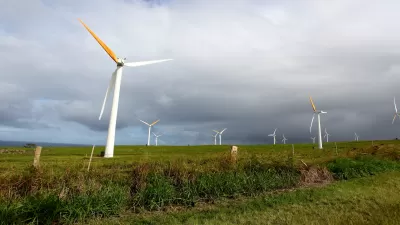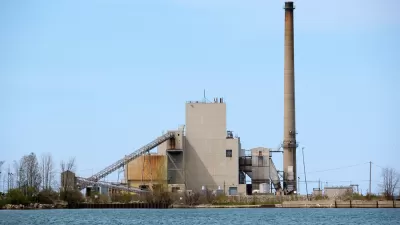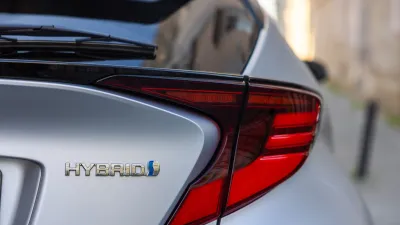Data from the U.S. Energy Information Administration shows that the total carbon emissions of the transportation sector is now greater than the carbon emissions of energy utilities.

"For the first time since 1979, America’s cars, trucks, and airplanes emit more carbon dioxide than its power plants do," according to an article by Brad Plumer.
Plumer is sharing analysis by Sam Omri, executive director of the Energy Policy Institute at the University of Chicago, using data from the U.S. Energy Information Administration's "Monthly Energy Review" from May 2016 [pdf].
Plumer's post also digs into why energy utilities have been easier to clean up than the transportation sector—namely, that coal was easier to transition from for utilities than oil has been for cars, trucks, and planes. The article provides a lot more detail about the size and scope of the remaining challenges facing the transportation sector in reducing carbon emissions.
FULL STORY: Power plants are no longer America’s biggest climate problem. Transportation is.

Study: Maui’s Plan to Convert Vacation Rentals to Long-Term Housing Could Cause Nearly $1 Billion Economic Loss
The plan would reduce visitor accommodation by 25,% resulting in 1,900 jobs lost.

North Texas Transit Leaders Tout Benefits of TOD for Growing Region
At a summit focused on transit-oriented development, policymakers discussed how North Texas’ expanded light rail system can serve as a tool for economic growth.

Why Should We Subsidize Public Transportation?
Many public transit agencies face financial stress due to rising costs, declining fare revenue, and declining subsidies. Transit advocates must provide a strong business case for increasing public transit funding.

How to Make US Trains Faster
Changes to boarding platforms and a switch to electric trains could improve U.S. passenger rail service without the added cost of high-speed rail.

Columbia’s Revitalized ‘Loop’ Is a Hub for Local Entrepreneurs
A focus on small businesses is helping a commercial corridor in Columbia, Missouri thrive.

Invasive Insect Threatens Minnesota’s Ash Forests
The Emerald Ash Borer is a rapidly spreading invasive pest threatening Minnesota’s ash trees, and homeowners are encouraged to plant diverse replacement species, avoid moving ash firewood, and monitor for signs of infestation.
Urban Design for Planners 1: Software Tools
This six-course series explores essential urban design concepts using open source software and equips planners with the tools they need to participate fully in the urban design process.
Planning for Universal Design
Learn the tools for implementing Universal Design in planning regulations.
City of Santa Clarita
Ascent Environmental
Institute for Housing and Urban Development Studies (IHS)
City of Grandview
Harvard GSD Executive Education
Toledo-Lucas County Plan Commissions
Salt Lake City
NYU Wagner Graduate School of Public Service




























